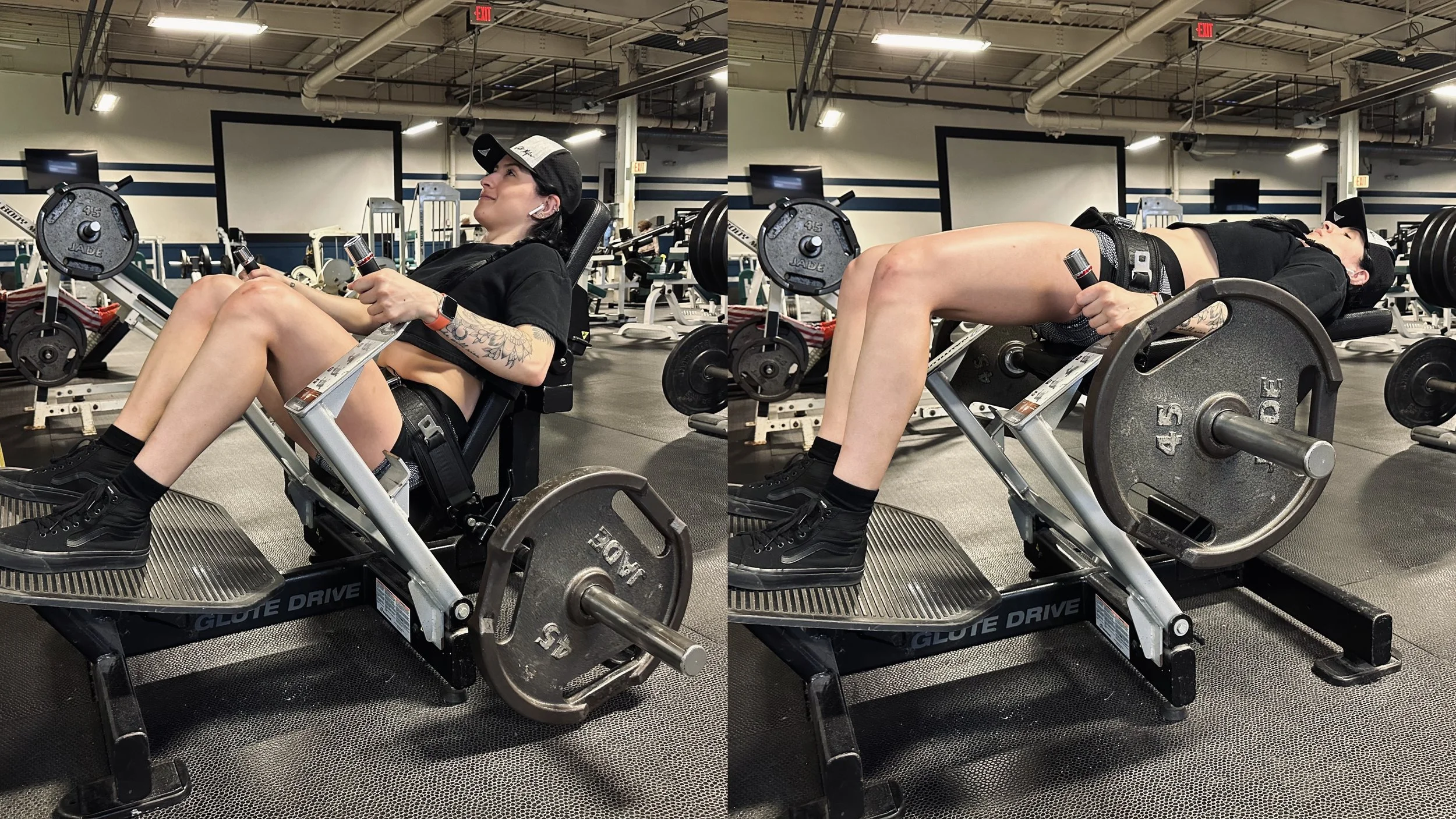Is the Hip Thrust Machine the Best Way to Grow Your Glutes? Here’s What a Certified Personal Trainer Says
Using the hip thrust machine on leg day to grow my glutes.
When it comes to weightlifting, building muscle is the goal for many bodybuilders, such as the gluteus muscles, often referred to as the “glutes”. While it’s typical to think only girls want to have a nice butt, both men and women should prioritize building muscle throughout their upper and lower bodies for overall balance and strength. One of the best ways to build muscle is by focusing on progressive overload, meaning you gradually improve volume overtime, with the same basic exercises every week.
To build your lower body and specifically your glutes, aim to get stronger at hip thrust variations. If you want to know everything about using the hip thrust machine, then you’ve come to the right place. To give you the best advice for your booty-building days at the gym, I spoke to Juliah Francis, a Certified Personal Trainer, American Natural Bodybuilding Federation (ANBF) Pro, and OCB Wellness Bodybuilder.
Juliah Francis is the owner of Sweat Society Training, where she offers services for nutrition, weight loss, strength and conditioning, and wellness and bikini posing. If you are interested in becoming a client, then reach out to Francis here.
Benefits of Using the Hip Thrust Machine
Francis says that the hip thrust is one of the most popular compound movements for glute growth, as well as to grow the hamstrings, quadriceps, and hip flexors. Hip thrusts work the muscles surrounding the pelvic floor, significantly improve posture, and improve mobility, which is why “hip thrusts are also perfect for improving balance,” says Francis.
As a staple exercise, hip thrusts also help increase overall strength in other exercises.
How to Use the Hip Thrust Machine
If this is your first time using the hip thrust machine, it can feel daunting to walk into the middle of a busy weight room to try and set it up. I was in that same boat not too long ago, but once I learned how to use it, it became one of my staple exercises to grow my glutes.
The hip thrust machine is pretty easy to set up—you just need to add the same amount of weight to each side, lie down on the back pad, and secure the buckle around your waist. Your feet should be slightly wider than hip distance apart with your toes pointed straight or slightly outward.
“Your knees should never be going over your toes,” says Francis. “The ideal way to find the correct footing would be to ensure your legs are finishing the rep at a 90-degree angle once your hips are fully extended.“
Start with no weight to get a feel for the machine. To begin this exercise, squeeze your glutes and push through your heels until your hips are aligned with your knees and shoulders. Your chin should be tucked to your chest. On the first rep, release the lever by pushing the handles forward. After pausing at the top, maintain tension in your glutes and lower your hips until you are just above the floor, and repeat the rep.
“With this being a hinge movement, your upper body should not be moving above the sternum,” says Francis.
On your last rep, when you are squeezing your glutes and your hips are aligned with your knees and shoulders, pull the handles back to lock the machine.
Doing a set of hip thrusts with heavier weight. Always drive through your heels and squeeze with your glutes. This ensures that you are lifting with good form and targeting the proper muscles.
Other Hip Thrust Variations
In addition to the hip thrust machine, this exercise can also be done using a dumbbell, barbell, or with the smith machine—it’s nice to have options when the gym is busy! Many weight lifters prefer doing hip thrusts with a barbell in order to reach maximum weight. Using the barbell allows you to load multiple 45-pound plates on each side.
Which machine you choose all comes down to personal preference—the hip thrust machine and a dumbbell are more practical when you’re in a time crunch since they’re easier to set up while the smith machine and barbell take a little bit more time but are better for those who want to maximize weight.
If you prefer to hip thrust with a barbell, you’ll need to use a bench that is stabilized properly against a wall or by placing some plates behind it to prevent sliding. Francis says that you’ll want to start by sitting on the floor with only your upper back resting on the bench. To increase the range of motion of the movement, you can use plates to elevate your feet for more depth. You’ll also want to find a pad to place around the bar for more comfort since the weight of the barbell is heavy on your hips.
Smith machine hip thrusts are similar to barbell hip thrusts, only you’ll need to set up the bench the proper distance from the bar to ensure it rests directly on your waist. With hip thrusts on the smith machine, simply just release the lever and start thrusting, then put it back when you’re done.
Is the Hip Thrust Machine the Best Booty Builder?
Although there are several lower-body exercises that target the glutes, Francis believes that hip thrusts are one of the best exercises to activate and grow the overall glute muscle. Unlike exercises like squats and deadlifts, hip thrusts are a horizontal exercise that is able to target the hip extensors and keep more tension on the glute muscle throughout the entire movement.
Francis has also seen progress with herself and clients by doing weighted step ups, Bulgarian split squat, lunges, Romanian deadlifts, and back extensions. Other glute exercises to consider adding to your routine are kickbacks, glute bridges, squats, and both abduction and adduction movements.
Let’s grow those glutes!

